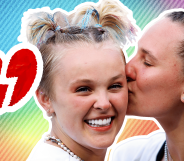Almost every single LGBT+ student faces homophobia or transphobia from classmates, disturbing report reveals

Homophobic and transphobic language is still an everyday occurrence in schools (Envato)
Homophobic and transphobic language is still an everyday occurrence in schools (Envato)
The hard-won progress on LGBT+ rights in schools could be at stake as a new report finds homophobic and transphobic language is ubiquitous in educational establishments.
The new study by GLSEN, a national LGBT+ education advocacy group, found that just under 99 per cent of LGBT+ students in the US have heard offensive remarks about their sexuality or gender identity.
Comments such as “that’s so gay” are still regularly thrown around playgrounds and campus cafeterias, which almost 92 per cent of queer students said made them feel “distressed”.
Almost 97 per cent of respondents stated that they had heard the phrase “no homo” at school, while more than 95 per cent reported hearing homophobic terms such as “dyke” and “faggot”.
About 69 per cent said they had experienced verbal harassment because of their sexual orientation, while just under 57 per cent said they had also been called names or threatened because of their gender expression.
A further eleven per cent said they had been physically assaulted, or “punched, kicked (or) injured with a weapon” because of their sexuality, the report noted.
The troubling results came from a survey of 16,700 LGBT+ students aged 13 to 21 in all 50 US states as well as the District of Columbia, Puerto Rico, American Samoa and Guam.
“This is a very significant wake-up call about how the progress we’ve won is directly under attack,” said Eliza Byard, the executive director of GLSEN, formerly the Gay, Lesbian & Straight Education Network.
“Where we are now is so different from where we were 20, 25 years ago in terms of how better things are. On the other hand, where we are is clearly still unacceptable,” she told Reuters.
Unfortunately the high prevalence of LGBT+ abuse isn’t isolated to schools: a recent Kantar survey across 14 countries and 24 industries showed that a quarter of LGBT+ people experience bullying in the workplace, and more than half suffer from “consistent high stress, anxiety and mental health problems” at work.

